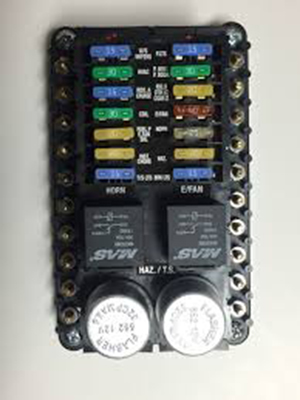Essential Signs of a Burned-Out Automotive Fuse and Their Impact on Vehicle Safety
News 2025-10-13
A car fuse acts as a vital safeguard in the electrical system, preventing damage from excessive current. These small components are designed to melt and break the circuit when overloaded, avoiding potential fires or component failures. Understanding the symptoms of a burned-out fuse is crucial for maintaining vehicle reliability and safety, especially in modern cars with complex electronics. Early detection allows drivers to address issues promptly, ensuring smooth operation and longevity of the vehicle’s systems.

Recognizing Visual Indicators
Fuses often show clear physical signs of burnout, such as a melted or discolored appearance. In many cases, the metal strip inside the fuse will be broken or blackened, which is easily spotted upon inspection. This symptom typically occurs in high-stress scenarios like short circuits or power surges. For instance, in everyday driving, fuses protect lights, radios, and power windows, highlighting their role in preventing widespread electrical failures that could strand a driver.
Electrical Performance Issues
When a fuse burns out, affected circuits may lose power entirely, leading to non-functional lights, dashboard warnings, or engine problems. This directly impacts performance by reducing the vehicle’s efficiency and safety features. Fuses excel in automotive applications due to their quick response times and cost-effectiveness, offering superior protection compared to alternatives like circuit breakers in high-vibration environments. Their compact design ensures they fit seamlessly into tight engine compartments, maintaining optimal vehicle operation under various driving conditions.
Diagnostic and Preventive Measures
To identify a burned-out fuse, drivers should use a multimeter or visually check the fuse box, focusing on fuses related to malfunctioning components. Regular maintenance in scenarios like long trips or extreme weather can prevent burnout by addressing underlying issues such as faulty wiring. The performance advantage lies in fuses’ ability to handle repeated cycles without degradation, making them ideal for the demanding conditions of automotive use, from city commutes to off-road adventures.
1. What causes a car fuse to burn out?
A fuse burns out due to excessive current from shorts, overloads, or aging components, protecting the circuit from damage.
2. How can I test a car fuse?
Use a multimeter to check for continuity or inspect visually for breaks in the fuse element.
3. Are all car fuses the same?
No, fuses vary by amperage and type to match specific circuits, ensuring precise protection for different vehicle systems.


